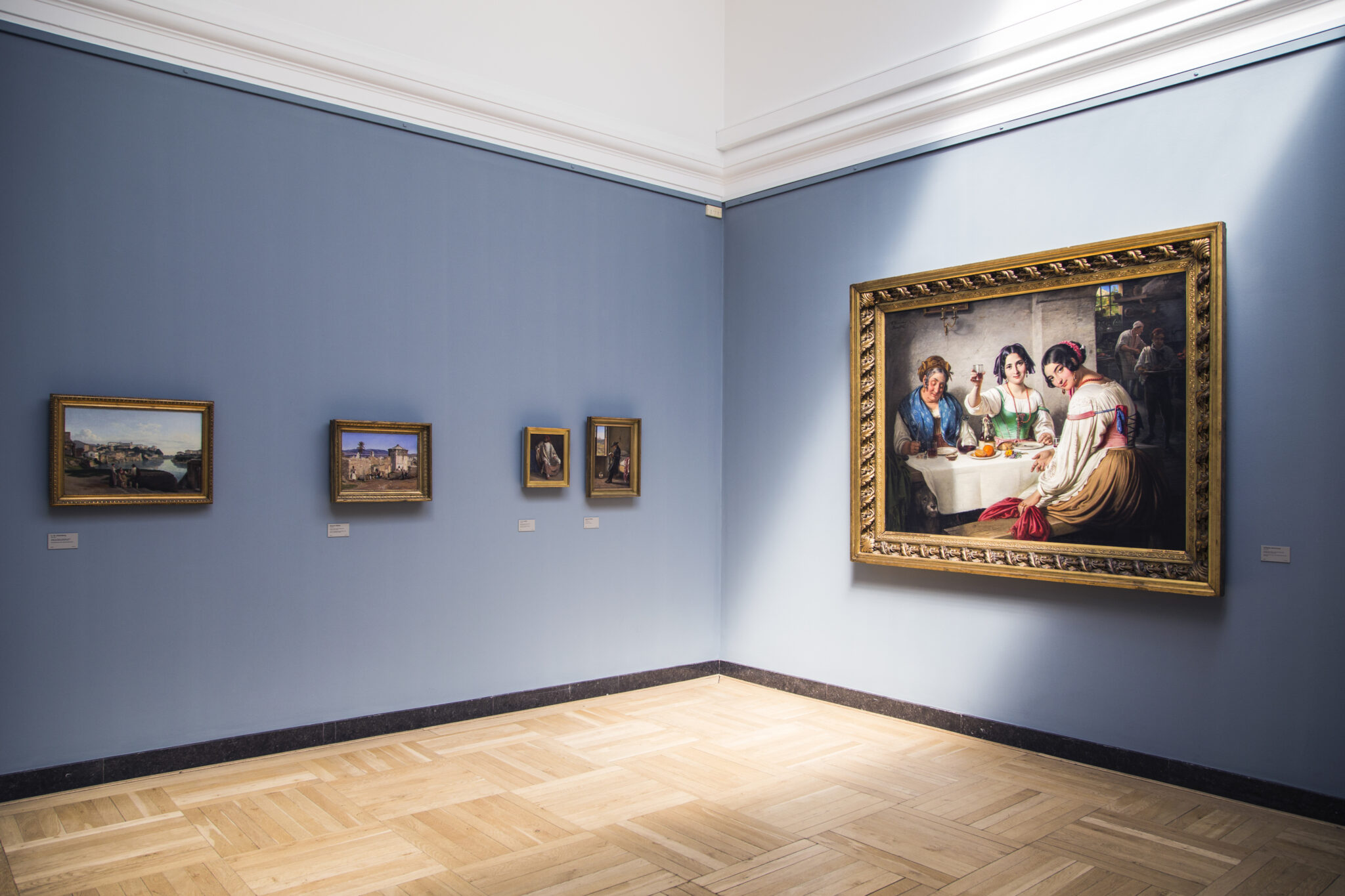The Glyptotek is a unique collage of architectural styles, full of ambience and sensory impressions.
Discover the architecture guide in the Glyptotek’s app. You can both read and listen to stories about the buildings created by some of the leading figures of Danish architecture: Vilhelm Dahlerup (1836 -1907), Hack Kampmann (1856-1920) and Henning Larsen (1925-2013). Find it in App Store or Google Play.
A daylight museum
The Glyptotek was originally intended to be a daylight museum, only open during daylight hours. Artificial lighting was later added, but daylight still plays a key role in the architecture of the museum and experiencing its works of art.
The Winter Garden is, like a greenhouse, covered with glass, with the golden light from the honey-coloured dome creating a uniquely warm Mediterranean glow. In Kampmann’s Central Hall the large, glass roof creates the impression of stepping into an open Roman forum. And although Henning Larsen’s building was custom built to protect the delicate paintings exhibited here, and the galleries therefore only have artificial lighting – the play of light and shadow on the impressive staircase, however, continues the museum’s traditional emphasis on natural light.
Dahlerup’s Winter Garden
The Winter Garden with its iconic dome and palm trees is the Glyptotek’s midpoint and landmark. But the Winter Garden is also at the heart of the museum in more than a physical sense. In his opening speech on June 27th, 1906, the Glyptotek’s founder, Carl Jacobsen, described the garden as a pleasurable point of entry to the works of art at the museum: “I hope that in the winter the greenery can draw people in, and when they see the palms maybe they will also give some thought to the statues.”
With his Winter Garden Jacobsen created an atmospheric entrance to the museum, which according to its founder was not to be “any ordinary museum” but an oasis for the people of Copenhagen. Which is why instead of using the word museum, he chose to call it the ‘Glyptotek’, from the Greek glyptos, meaning carving or sculpture, and theke for the place where something is collected or displayed.
The large Canarian date palms came from the winter garden of Carl Jacobsen’s mother in Valby. Together with the lushness of the other plants, they conjure up the Mediterranean climate in which many of the works in the museum’s collections were created.
Like the architecture surrounding it, the Winter Garden was designed by the architect Vilhelm Dahlerup. Despite Dahlerup’s building being inaugurated in 1897, the Winter Garden was first added to the museum in 1906. The dome was part of plans for the Glyptotek from the very beginning, but it was originally planned to be built in stone. As a result of the delay, instead of being built in stone, the dome was made of iron and glass, in keeping with the glasshouses and exhibition pavilions that became possible and popular with the advent of industrialised iron foundries at the end of the 19th century.
Kampmann’s Central Hall
The museum’s Central Hall is the centre of Hack Kampmann’s extension, which was inaugurated in 1906. Here it becomes clear that the extension was custom made to house the collection of classical antiquities Carl and Ottilia Jakobsen had donated to the museum in 1899.
The classically inspired architecture is like an ancient, marble colonnade and reminiscent of a Roman forum: an elongated square surrounded on three sides by colonnades with a temple at the end. Roman portrait statues of emperors and citizens stand between the columns of the Central Hall, just as they would have done in a Roman forum.
The statues are from Ancient Rome, although several of them are composites made of two different originals. Carl Jacobsen thought headless statues would look out of place in a hall intended for gatherings and celebrations. He wanted a hall “where statues stand in all their festiveness and harmony to bring beauty to the lives of the living.”
The roof terrace and Henning Larsen
The roof terrace at the top of Henning Larsen’s building offers a view of the complex roof landscape of Copenhagen and the Glyptotek. Here you can get a sense of how the individual buildings form a whole, with Dahlerup’s glass dome and roof ridges facing Dante’s Square, Kampmann’s building with its step pyramid and the glass roof of the Central Hall, and finally Henning Larsen’s extension built in the former museum courtyard.
The Henning Larsen building was inaugurated in 1996 for the Glyptotek’s collection of modern painting. At first glance the building appears to be the epitome of Modernist architecture. Yet with its smooth, gently sloping walls, the building also echoes the architecture of Antiquity, especially that of Ancient Egypt. The building itself is covered with marble stucco, making the surface as gleamingly smooth as the Carrara marble of the staircase. The most prominent decorative element comes from the bars of the glass roof, which on sunny days cast shadows on the walls of the stairwell.
Exhibitions
The Glyptotek's exhibitions present artworks and cultural-historical objects.
Café
Enjoy delicious dishes, snacks, and cakes at the museum café Picnic overlooking the beautiful Winter Garden.
Calendar
See what's happening at the Glyptotek.








